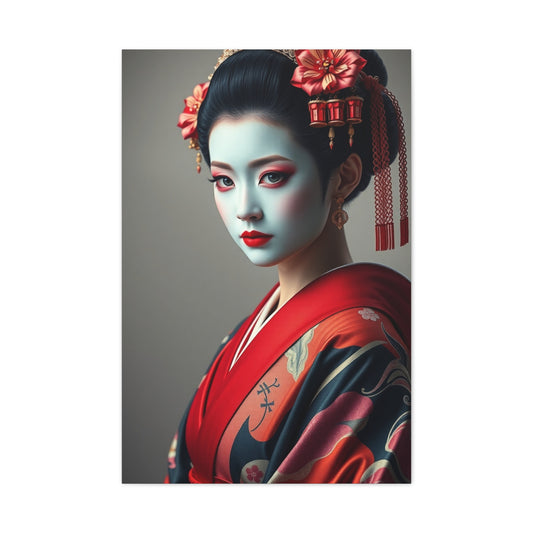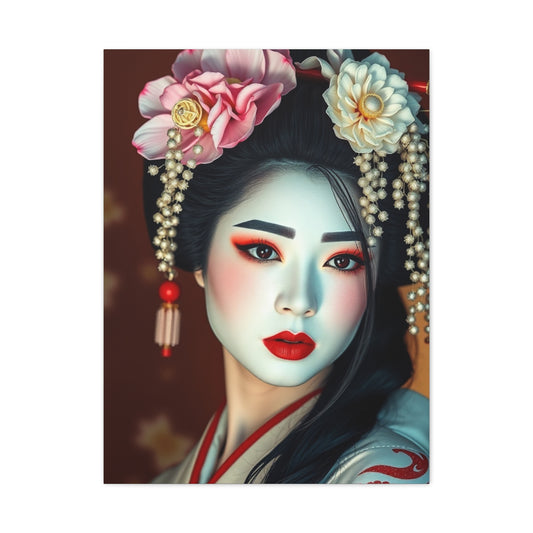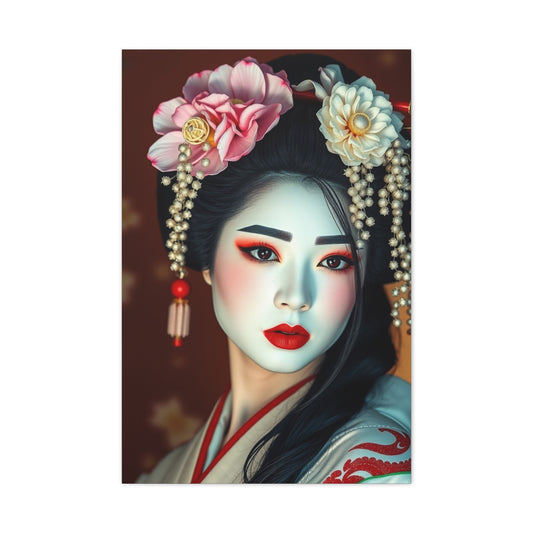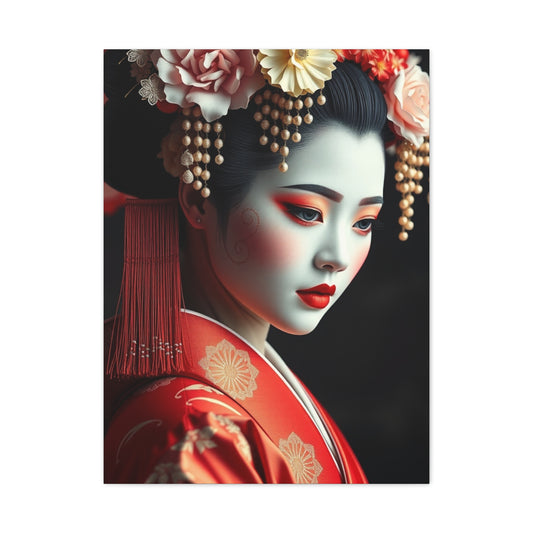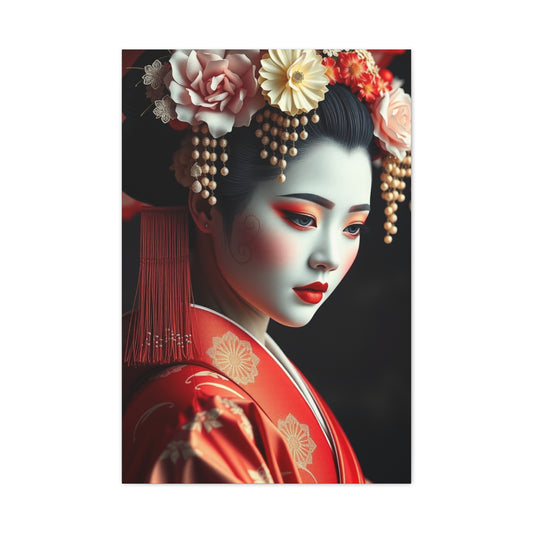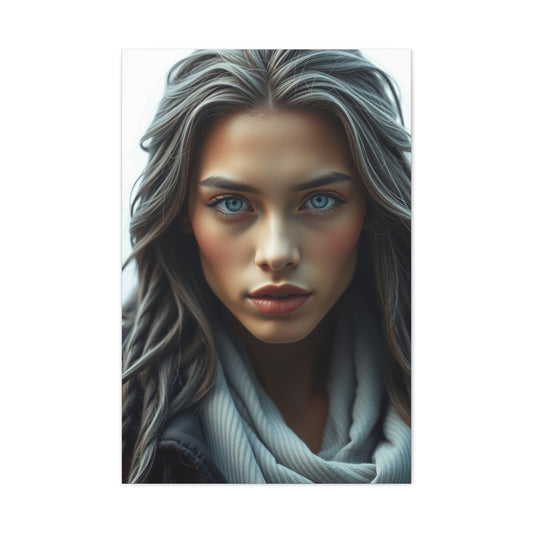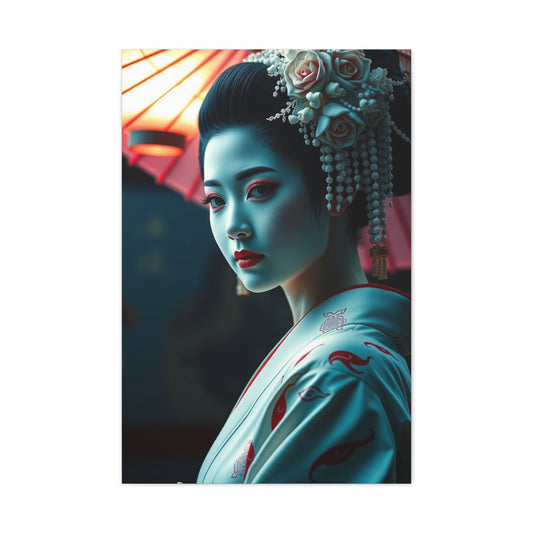Getting stuck in a creative rut or experiencing uninspiring photoshoots can happen to any photographer. However, these moments of frustration don’t need to dominate your experience. Photography is about exploration, self-expression, and pushing boundaries—and sometimes, it just takes a game to reignite your passion. Playing photography games is a fantastic way to break free from a creative slump, hone your skills, and most importantly, have fun. Below are 12 photography challenges designed to spark your imagination and help you discover new aspects of the art. Some will encourage you to think outside the box, while others will give you the perfect opportunity to relax and enjoy the process.
1. "Where in the World Was This Taken?" Photo Challenge
Photography is an incredible medium through which you can explore new locations, capture unique moments, and share your experiences with others. The "Where in the World Was This Taken?" a photo challenge is a creative and engaging way to practice travel photography while also having fun with your audience or friends. It encourages you to look at the world through the lens of your camera, capturing a variety of landscapes, architectures, and cultural elements from different places. By participating in this challenge, you’ll improve your photographic skills, learn more about geography, and uncover new places around the world.
The concept of this photography game is simple yet effective. In this challenge, you take photographs of various locations, and your task is to share them with your friends, social media followers, or even a photography group to guess where the images were taken. This game can be played both in person or virtually, and there are multiple ways you can elevate the experience for yourself and others.
One way to make the challenge more interesting is to zoom in on specific details in your photos, such as the texture of a wall, a unique architectural feature, or even a local food dish. By focusing on small yet distinct elements of a location, you will encourage your friends or followers to engage their minds and guess the exact place. This approach adds an extra layer of complexity to the game, as people will have to rely on subtle clues to determine the location, whether it's a famous landmark or an everyday street scene.
|
Related Catagories: |
For example, you could capture a photo of an intricate mosaic on a floor in a European church, or a close-up of a traditional dish from a specific culture, and ask your audience to guess the country or region it belongs to. This will also help you develop a keen eye for detail, forcing you to observe your surroundings more closely. You might even find yourself noticing things you’ve missed during previous travels.
Practicing Geography and Travel Photography
In addition to being a fun game, the "Where in the World Was This Taken?" challenge is also a great opportunity to improve your knowledge of global geography and the nuances of travel photography. If you play this game solo, websites like GeoGuessr can be an excellent resource. GeoGuessr is a game that uses Google Street View to drop players into random locations around the world, and they have to guess where they are based solely on visual cues. By using this website in conjunction with your photography, you can refine your ability to spot geographical landmarks, and expand your knowledge of different regions, climates, and cultures. It’s a game that will not only boost your photography but also enhance your understanding of the world.
This challenge will expose you to various types of photography that you might not have explored before. As you capture photos for this game, you might start to notice how different locations lend themselves to certain photographic styles, from the urban landscapes of busy cities to the sweeping views of rural landscapes. Each place you photograph will offer a unique set of challenges, from lighting and composition to working with different weather conditions.
When shooting photos for this challenge, it’s essential to think about how you frame the image. For example, wide-angle shots may be better suited for capturing sweeping vistas, whereas close-up shots work well for showcasing intricate details. These techniques will not only help you improve your composition but also expand your photographic skill set.
Expanding Creativity Through Global Exploration
One of the most valuable aspects of the "Where in the World Was This Taken?" challenge is how it pushes you to think outside of the box and get creative with your photography. It encourages you to look at the world through a new lens, capturing elements of a place that are often overlooked by tourists or even locals. For instance, while most people may be inclined to snap photos of famous landmarks, this challenge encourages you to take a step back and think about the smaller details that make each location special.
If you're visiting a city known for its historical architecture, focus on capturing the subtle details of a weathered door or the reflection of a building in a puddle. If you're photographing a bustling market, hone in on the textures of the fabrics, the vibrancy of the fruits and vegetables, or the unique expressions of the people. By honing your ability to capture the essence of a location, you will not only improve your skills as a photographer but also develop a deeper connection to the places you visit.
Additionally, this challenge is an excellent way to build a diverse portfolio. As you venture to new locations and experiment with different photography techniques, your body of work will become richer, more varied, and more reflective of the world’s diverse landscapes and cultures. Whether you’re photographing the towering skyscrapers of New York City, the serene beauty of a remote village, or the lush landscapes of a tropical island, this challenge will push you to capture the essence of each location.
How to Share and Engage with Others
The beauty of the "Where in the World Was This Taken?" photo challenge is that it can be played with others, making it a fun and interactive experience. Once you’ve captured your photos, you can share them with your social media followers or post them in photography forums or groups. People love to guess, so you’re likely to receive a great deal of engagement and participation. Encourage others to share their guesses, and offer small rewards or shout-outs to those who guess correctly.
For a more interactive experience, consider hosting a photo contest where participants can submit their own travel photos, and everyone takes turns guessing the location. You can even incorporate a voting system to make the game more competitive. These social interactions can not only make the game more enjoyable but can also lead to constructive feedback, allowing you to learn from others and improve your photography skills.
Inspiration for Future Photography Projects
While this challenge is a fun and engaging way to practice your photography skills, it can also inspire future projects. By photographing different places, you may begin to notice trends in the types of locations that resonate with you the most. Maybe you discover a passion for capturing historical landmarks or a love for photographing street scenes in bustling cities. As you continue to play this challenge, you might develop a photographic style that is uniquely yours, something that reflects your personal experiences and interests.
Moreover, the challenge could inspire you to take on larger photography projects, such as creating a travel photography portfolio, documenting the culture of a specific region, or even embarking on a photography journey around the world. As you experiment with various locations, you may also find yourself drawn to a particular theme or subject matter that you’d like to explore in more depth.
2. Photography Charades: Draw and Guess Edition
Photography is a dynamic art that encompasses a wide range of techniques, tools, and concepts. For those passionate about photography, it's important to not only capture stunning images but also understand the terminology, equipment, and techniques that make up the craft. A fun way to learn and bond with fellow photographers is through a game known as "Photography Charades: Draw and Guess Edition." This interactive and engaging game offers an entertaining way to get better acquainted with the world of photography while also enhancing your knowledge and having a good time.
At its core, Photography Charades is a creative twist on the traditional charades game. Charades, as most people know, involves acting out words or phrases without speaking, while others try to guess what you're performing. In the photography version of this game, you take on the role of an artist drawing various photography-related terms on a whiteboard or large piece of paper, while your friends or fellow photographers try to guess the terms based on your sketches. This version offers the perfect balance of fun, learning, and teamwork, making it an ideal game for photography enthusiasts of all levels.
How to Play Photography Charades
To play Photography Charades, you'll need a group of people, some paper or a whiteboard, and markers or pens. The rules are simple and can be easily adjusted depending on your group size and skill level. You’ll write down various photography-related terms or equipment names on pieces of paper, fold them, and place them into a hat or container. These could include terms like aperture, DSLR, ISO, portrait photography, lens flare, or even famous photographers like Ansel Adams or Steve McCurry. The goal is for the artist to convey the term through their drawings while the others guess what it is.
One by one, players take turns drawing, and they have a set time limit—typically between 30 to 60 seconds—within which they must complete their drawing. There’s no speaking, gesturing, or using any words, making it a true test of creative thinking. The rest of the group must guess the term based solely on the drawing, with the first person to guess correctly winning that round. After each term, a new person can take on the role of the artist, and the game continues with fresh terms.
This activity brings out both the playful and educational sides of photography. For example, if the artist is tasked with drawing "shutter speed," they might use quick, jagged lines to represent the concept of motion blur, helping the group better understand the technical aspects of capturing movement. Similarly, a "tripod" could be depicted with three legs to show its stability and support for cameras. It’s a fun and lighthearted way to explore various photography concepts and equipment while improving the team's knowledge.
Why Photography Charades is a Great Learning Tool
Photography Charades is not only entertaining but also an excellent way to reinforce the vocabulary and concepts that are central to photography. For beginners, it can serve as a playful introduction to the technical terms and equipment they might encounter as they dive deeper into the craft. It’s easy to forget that photography is not just about taking pictures but also about understanding the technical aspects behind each shot. For instance, knowing how to adjust exposure settings, utilize the correct camera lenses, and properly compose an image is crucial to becoming a skilled photographer. This game reinforces those skills by encouraging participants to visualize the tools and concepts they might one day use in their own photography work.
For those with more advanced knowledge, the game can serve as a fun refresher to keep key concepts fresh in the mind. The beauty of Photography Charades is that it provides a more engaging way of learning compared to simply reading textbooks or watching tutorials. It combines active participation with creative thinking, reinforcing your knowledge through play. As players take turns drawing, it also sparks interesting conversations and debates about photography techniques and famous works, which can help participants deepen their understanding of the art.
Adding a Competitive Element
While Photography Charades is naturally fun, you can take it up a notch by introducing a competitive element. To increase the stakes, consider tracking how many items each participant guesses correctly or how many rounds they win as the artist. At the end of the game, you can offer a small prize for the player with the most points, or even create a trophy for the winning team. The added competition will motivate everyone to participate more actively, sharpening their skills and enhancing their understanding of photography.
You can also increase the challenge level by using more complex photography terms. For instance, terms like “bokeh,” “depth of field,” or “golden hour” will make the game more difficult, requiring the artist to get even more creative with their illustrations. This added complexity can provide a learning opportunity for players to think critically about advanced photography concepts. On the flip side, if you have beginners in your group, you can focus on simpler terms, such as “camera,” “flash,” or “lens,” to ease them into the game.
Bonding with Fellow Photographers
One of the most significant benefits of Photography Charades is that it fosters a sense of community among photographers. Whether you're playing with a group of friends, fellow photography enthusiasts, or even at a photography workshop, this game encourages teamwork, collaboration, and friendly competition. It provides a relaxed environment where players can socialize, laugh, and learn together.
The shared experience of drawing and guessing photography terms creates opportunities for meaningful conversations about the art form. As the game progresses, you might find yourself discussing your favorite types of photography, sharing tips and tricks, or reflecting on iconic photographs. It’s an informal yet valuable way to learn from others, gain inspiration, and build connections with people who share your passion for photography.
Using Photography Charades for Photography Workshops and Events
Photography Charades is an ideal icebreaker for workshops, photography meetups, or group photo shoots. It’s a fun way to introduce new participants to the world of photography and get them comfortable with the terms and concepts they'll encounter during the event. When you’re teaching photography to a group, this game can serve as an engaging way to get everyone on the same page and make the learning process enjoyable.
At photography conventions or networking events, Photography Charades can break the ice and encourage interactions between attendees. By introducing a game that mixes creativity with technical knowledge, you’re ensuring that everyone walks away having learned something new, whether it’s the intricacies of aperture or simply a fun fact about a photographer's equipment.
|
Related Catagories: |
3. Life Is Strange: The Photography Game
For those who are passionate about both gaming and photography, Life Is Strange offers an intriguing blend of storytelling and visual exploration. This graphic adventure game has captured the hearts of players worldwide, and for photography enthusiasts, it presents a unique opportunity to engage with photography concepts in an interactive and immersive setting. The game centers around Maxine Caulfield, a senior photography student, who is thrust into a whirlwind of mystery, time manipulation, and crucial decisions. While Life Is Strange isn't entirely focused on photography, it beautifully weaves photography into its narrative, allowing players to practice their photographic eye while making choices that influence the story.
Maxine Caulfield: A Photographer’s Journey
Maxine Caulfield, the protagonist of Life Is Strange, is an aspiring photographer whose passion for visual storytelling mirrors that of real-world photographers. At the start of the game, Max discovers that she has the unique ability to rewind time, an ability that becomes central to the storyline. However, beyond the supernatural elements, the game offers players a deep connection to photography, as Max uses her camera to document pivotal moments in the game’s unfolding plot.
The camera becomes a tool of both exploration and discovery. As Max, you’ll encounter key moments where capturing a photograph can reveal hidden truths, expose secrets, or provide new perspectives on the world around her. For a photography lover, this aspect of the game is particularly captivating, as it emphasizes the power of images to not only preserve moments but also to influence the narrative.
The Role of Photography in the Plot
Throughout Life Is Strange, the act of taking photos becomes integral to the game's storyline and Max's character development. The moments she chooses to photograph reflect her evolving understanding of the events around her, as well as her personal growth. For players who appreciate the art of photography, these moments provide an opportunity to think critically about composition, lighting, and subject matter, much like any real-world photoshoot.
In addition to exploring the technical aspects of photography, the game challenges players to consider the emotional impact of the photographs Max captures. These photos often reflect significant moments that define the choices Max makes, as well as the relationships she develops throughout the game. Photography, in this context, becomes more than just a tool to record reality—it becomes a way of expressing thoughts, emotions, and experiences.
Unlocking Achievements Through Photography
While the gameplay itself isn’t entirely centered around taking pictures, the camera plays a pivotal role in unlocking achievements. In certain sections of the game, Max is encouraged to take specific photos of objects or scenes that are directly linked to the storyline. These photographs not only serve as collectibles but also contribute to Max's journey. For example, she might need to capture a significant event or a moment of high emotional tension. The more you engage with these photo opportunities, the more you’ll discover about the characters, the world, and the overarching narrative.
This mechanic introduces an interesting dynamic to the gameplay: photography isn’t just a passive element, it actively shapes the way you experience the story. By exploring different angles, settings, and moments, players can enhance their understanding of Max’s perspective. Much like a real-life photographer, players must decide what to focus on, which moments to capture, and how best to document them. It’s a thoughtful approach to integrating photography into a video game, showing that the act of taking a photo can be as meaningful as the picture itself.
Visual Storytelling and Photography Principles
Life Is Strange offers an excellent opportunity to explore visual storytelling, a crucial concept in both photography and narrative art. In real-world photography, every shot tells a story, and Max’s journey as a photographer mirrors this principle. Players are encouraged to think about composition, framing, and the significance of each image she captures. The game emphasizes that photography is not just about taking beautiful pictures but about conveying emotions, moods, and moments in time.
The game teaches players how to focus on the subtleties that make photographs stand out. Just as a photographer in real life would pay attention to lighting, angles, and the rule of thirds, players in Life Is Strange are asked to notice the tiny details that shape the images Max captures. These principles are not only relevant to the story but also serve as a valuable lesson for anyone looking to improve their own photography skills.
One of the most poignant aspects of Life Is Strange is the way photography mirrors the game's emotional depth. Just as Max uses her camera to document life around her, players can reflect on how photographs capture the emotional essence of a moment. Whether it’s a photo of a friend, a quiet scene of nature, or a dramatic confrontation, each photo tells a larger story about the characters and their world. The game invites players to think critically about how photographs can shape narratives and communicate powerful messages.
A Unique Learning Experience for Photography Enthusiasts
For those who are passionate about photography, Life Is Strange offers an unexpected yet rewarding experience. While it might not offer the hands-on technical learning of a photography tutorial, the game encourages players to think like photographers by providing opportunities to practice visual storytelling. Players must pay attention to the environment, lighting, and framing, as these elements directly impact the photographs Max takes. By incorporating photography principles into the gameplay, the game deepens the connection between art and narrative, providing a unique way to engage with the medium of photography.
Moreover, the game serves as a reminder of the importance of capturing moments and memories. Photography in Life Is Strange is not just about taking pictures; it’s about documenting the emotional milestones of the characters' lives. The game reinforces the idea that photography can be a powerful tool for personal reflection and understanding the world around us. For players who appreciate the art of photography, this game offers a unique perspective on how images can shape our understanding of time, people, and places.
A Journey Through Time and Photography
Ultimately, Life Is Strange provides a compelling journey that combines the art of photography with a captivating narrative. Through Max’s lens, players experience a world full of mysteries, emotional moments, and choices that impact the course of the story. The integration of photography into the gameplay not only enhances the story but also provides an opportunity for players to reflect on the power of visual storytelling. Whether you’re a seasoned photographer or simply someone who appreciates the art of capturing moments, Life Is Strange offers a fascinating exploration of how photography can be used to convey deeper meanings and emotions.
By combining the mechanics of a graphic adventure game with the principles of photography, Life Is Strange creates a compelling and immersive experience that appeals to both gamers and photography enthusiasts alike. Through the lens of Max Caulfield's camera, players are not only able to explore a captivating story but also deepen their understanding of visual storytelling, composition, and the significance of every photograph taken.
4. Weekly Theme Photography Challenge
The Weekly Theme Photography Challenge is an incredibly flexible and inspiring game that can help you push your creative boundaries. Each week, you choose a new theme for your photos. The themes can be abstract like "identity," "nostalgia," or "movement," or more tangible concepts like "urban life" or "black and white." The beauty of this challenge is that it encourages you to think outside the box and approach common subjects from fresh perspectives. You can participate in this challenge solo, or join an online group to engage with others who are exploring similar themes. Week by week, you’ll find your photography style evolving as you experiment with new techniques, compositions, and creative ideas. Over time, you might discover a deeper connection to certain photography styles and genres, helping you become a more versatile photographer.
5. The Object Angle Challenge
Sometimes, the most ordinary objects can make for the most interesting photographs—if you know how to approach them creatively. This game challenges you to pick a single object and photograph it from multiple angles. Each photo should showcase the object in a different light, using different camera settings, compositions, or lighting setups. This challenge forces you to think beyond your usual shooting habits and encourages you to experiment with your aperture, shutter speed, and depth of field. It’s a fantastic way to practice your technical skills while also exploring new perspectives and angles that you might otherwise overlook. As you complete this challenge, you’ll become more adept at turning even the simplest objects into captivating photography subjects.
6. Family Portraits: Age Order
Capturing family portraits is an excellent way to document the passage of time and the people you love most. This challenge invites you to photograph your family members in order from the oldest to the youngest (or vice versa). Instead of posing them in traditional family portrait fashion, focus on capturing natural, candid moments that tell a story. This is a fantastic project for families to engage in together, allowing everyone to participate in taking the photos or being the subject. Whether you’re photographing your grandparents, siblings, or young children, this challenge will help you sharpen your portrait photography skills while also creating meaningful memories that will last a lifetime.
7. Join Gurushots and Compete
Gurushots is an online platform where photographers from around the world participate in photography contests based on different themes. You can upload your best photos to compete with others, gain votes from the community, and earn achievements. As you level up, you’ll unlock the ability to create your own contests, and you’ll also be featured in various exhibitions and magazines. This challenge is great for photographers who enjoy competition and are looking to receive constructive feedback from a community of like-minded individuals. The variety of themes ensures that you’ll constantly be challenged and motivated to improve your photography skills. Plus, the rewards and recognition from the community can be a great confidence booster.
8. Shoot From the Hip
Street photography and candid shots can yield some of the most exciting and unexpected photos, and shooting from the hip is one of the best ways to capture these moments. In this challenge, you’ll take photos without looking through the viewfinder or camera screen, essentially shooting from the hip. This forces you to be more spontaneous and creative with your framing and timing, making each shot feel more authentic. While it might be difficult at first, especially when you’re trying to capture fleeting moments, this challenge will help you embrace the art of candid photography. You’ll learn to rely on your intuition, increase your reaction time, and create photos that tell a story without forced composition.
9. Black & White Photography Only
Photography is an art form that invites photographers to explore their creative visions, capturing the world through a lens in ways that are as unique as the individuals behind the camera. While modern digital photography offers an abundance of vibrant colors, there is a timeless and powerful quality in black and white photography that continues to captivate photographers and audiences alike. One way to elevate your photographic skills and see the world in a new light is by challenging yourself to shoot exclusively in black and white. Limiting yourself to this monochromatic approach for a period of time can help you hone your ability to see composition, light, contrast, and texture in ways you might overlook in color photography.
When you remove the distraction of color from your photos, you are forced to focus on the essential elements of photography—composition, contrast, texture, and light. These are the building blocks of every great photograph, and mastering them can elevate your overall photography. Whether you’re working with portrait photography, street photography, or architectural shots, black and white photography can sharpen your skills and deepen your understanding of how visual elements work together to create striking images.
Refining Your Composition Skills
Composition is one of the most important aspects of photography, and black and white photography can enhance your ability to compose visually compelling images. In color photography, colors can dominate the frame and draw the viewer's eye, sometimes overshadowing other important compositional elements. However, when you eliminate color, you are left with shapes, lines, textures, and contrasts that must be carefully arranged within the frame to create a balanced and engaging image.
This challenge forces you to think critically about how the elements of your scene interact with each other. For instance, when capturing a portrait, you may need to rely more heavily on the lighting and shadows to highlight the subject’s facial features, rather than on the vibrant colors of their clothing or surroundings. Similarly, when photographing a street scene, you may pay more attention to the contrast between light and shadow, which can create a sense of depth and drama that isn’t as apparent in a color image. As you begin to compose your black and white shots, you'll develop a greater understanding of how to arrange visual elements to create strong, impactful images.
Understanding the Impact of Light and Contrast
One of the most significant advantages of black and white photography is the heightened emphasis on light and contrast. Color photography often relies on the vibrant hues to communicate the mood of a scene, but in black and white photography, light becomes your primary tool for storytelling. The interplay between light and shadow can dramatically alter the mood of an image, and by removing color, you can better understand how these elements influence the overall composition.
For example, harsh light can create deep shadows and sharp contrasts, adding a sense of drama and intensity to your photos. On the other hand, soft, diffused light can create a calm, serene effect, with gentle transitions between light and shadow. These contrasts can also bring out textures that may otherwise go unnoticed, such as the roughness of a stone wall or the smoothness of a reflective surface. By focusing on light and contrast, black and white photography helps you understand how to use natural and artificial light sources to create the desired mood and effect in your images.
Enhancing Your Perception of Texture
Without the distraction of color, textures in your images become much more pronounced in black and white photography. The texture of various surfaces—from the wrinkles of a person’s skin to the grain of wood or the roughness of concrete—becomes a focal point in your compositions. The absence of color helps reveal intricate details and enhances the tactile qualities of your subject, adding depth and richness to your photographs.
This challenge is especially useful for photographers who want to focus on capturing raw, detailed images in portraiture, fashion, or street photography. For instance, the texture of a fabric in a fashion shoot can stand out more in black and white, allowing you to emphasize the way light interacts with different materials. In architectural photography, the unique textures of buildings—such as the smoothness of glass or the roughness of brick—become more prominent, helping to highlight the structure’s design and form. By focusing on texture, you’ll learn to appreciate the tactile qualities of your subjects and how they contribute to the overall mood of the image.
Perfecting Your Skills in Portrait and Street Photography
Black and white photography is particularly effective in portrait photography, where the absence of color forces you to focus on the subject’s expression, the lighting, and the overall composition. Without the distraction of clothing colors, vibrant backgrounds, or colorful props, you are left to consider the subject’s personality, their emotions, and how you can capture their essence with light and shadow. This stripped-back approach helps you develop a stronger connection with your subjects, allowing you to produce more intimate, evocative portraits.
Similarly, black and white photography is a powerful tool in street photography, where scenes can often be chaotic and filled with distracting elements. By shooting in monochrome, you simplify the scene and bring attention to the core subject matter, whether it’s the contrast between light and shadow or the fleeting moments of human interaction. Black and white photography can add timelessness and emotional depth to street images, drawing attention to the emotions or actions that might otherwise be overlooked in a color photograph.
Exploring the Emotional Power of Monochrome
The absence of color can amplify the emotional impact of an image. Black and white photos often evoke a sense of nostalgia, introspection, or drama, depending on the contrast and lighting used. The monochromatic palette can heighten the mood of the scene, making it feel more intense, timeless, or poignant. For example, a portrait of an elderly person, captured in black and white with soft, diffused light, can convey feelings of vulnerability and wisdom, whereas the same image in color might not elicit the same emotional response.
By experimenting with black and white photography, you’ll begin to understand how the absence of color influences the emotional atmosphere of your images. This can be especially valuable for photographers working in editorial or fine art photography, where emotional storytelling is key. The challenge of shooting in black and white forces you to be more intentional about the emotions you want to convey, giving you greater control over the viewer's experience.
Alternating Between Color and Black and White
One interesting approach to this challenge is alternating between color and black and white during your photoshoots. This exercise allows you to compare how different choices—color versus monochrome—impact the mood and overall composition of an image. After capturing the same subject in both color and black and white, you can evaluate which version better conveys your intended message or aesthetic. This experimentation will help you gain a deeper understanding of how color affects the viewer’s perception and how black and white photography can be a powerful tool for emphasizing mood and contrast.
10. Experiment With Different Camera Apps
With smartphone photography on the rise, there’s no better time to experiment with different camera apps. Instead of using the default camera on your phone, try out third-party apps like Manual for iOS, Camera MX for Android, or even quirky filter apps like Snapchat to explore new ways of photographing. Each app offers unique features that can push you outside your comfort zone, whether you’re adjusting settings manually or using a fun filter to create humorous or artistic photos. The goal of this challenge is to get creative with the tools available to you, encouraging experimentation and discovery through different camera apps.
11. Recreate Iconic Photos or Artwork
Recreating iconic photos, artwork, or even scenes from films is a great way to learn from the masters. This challenge doesn’t focus on copying the original image; instead, it helps you understand the techniques, lighting, and composition used in those works. Try to replicate the key aspects, and then use what you’ve learned to create original works in your own style. By practicing with iconic imagery, you’ll get a better understanding of how to use light, angles, and composition to evoke emotions in your viewers. This is also a fantastic learning experience if you’re interested in editorial or fashion photography, as many famous photos have defined visual styles that you can learn from.
12. Snapshot: A Photography Adventure
Snapshot is an indie puzzle game where the protagonist, Pic, uses a camera to interact with the world and solve obstacles. You can take photos of objects, rotate them, and use them to help progress through the game’s levels. While this is not a traditional photography tutorial, it’s a fun and imaginative way to combine photography with puzzle-solving in a digital world. The game encourages you to think about photography in a different way—combining visual elements with problem-solving and creativity. If you’re a fan of both gaming and photography, this challenge will help you appreciate how photography can be integrated into various mediums.
Conclusion
These 12 creative photography challenges are designed to bring fun and excitement to your photography journey. Whether you’re exploring new techniques, learning from iconic images, or simply experimenting with your camera, these games will help you stay inspired and grow as a photographer. Take these challenges to heart, and you may discover new aspects of photography that reignite your passion for the craft. Let yourself be playful, explore, and watch your photography skills soar!














